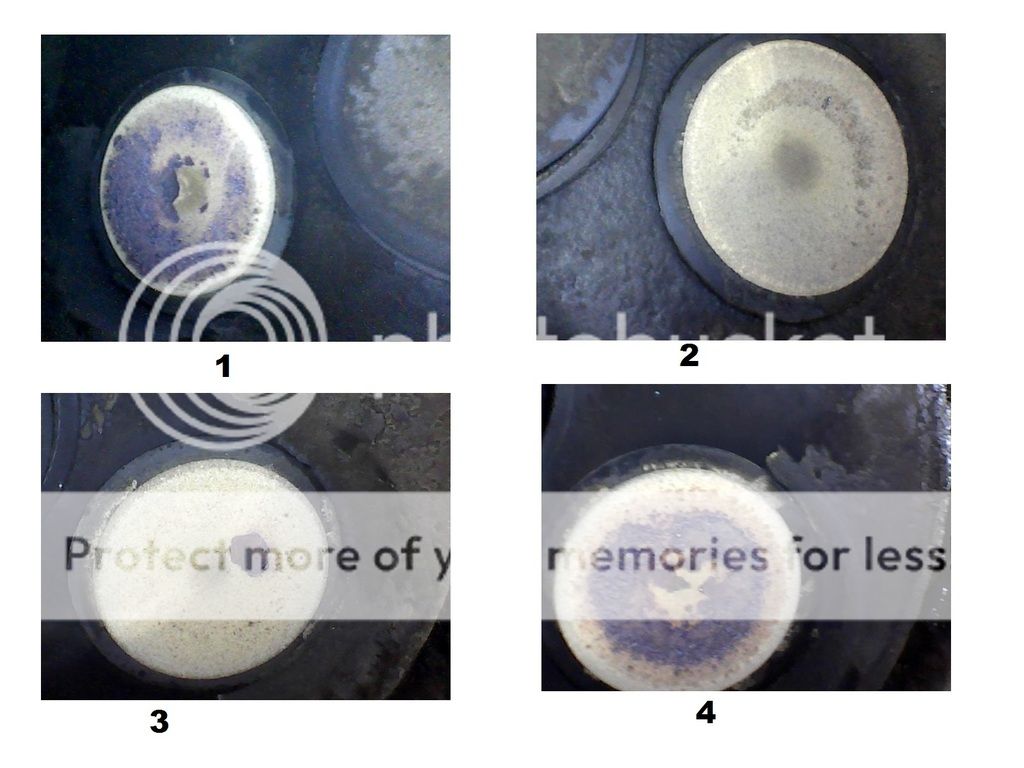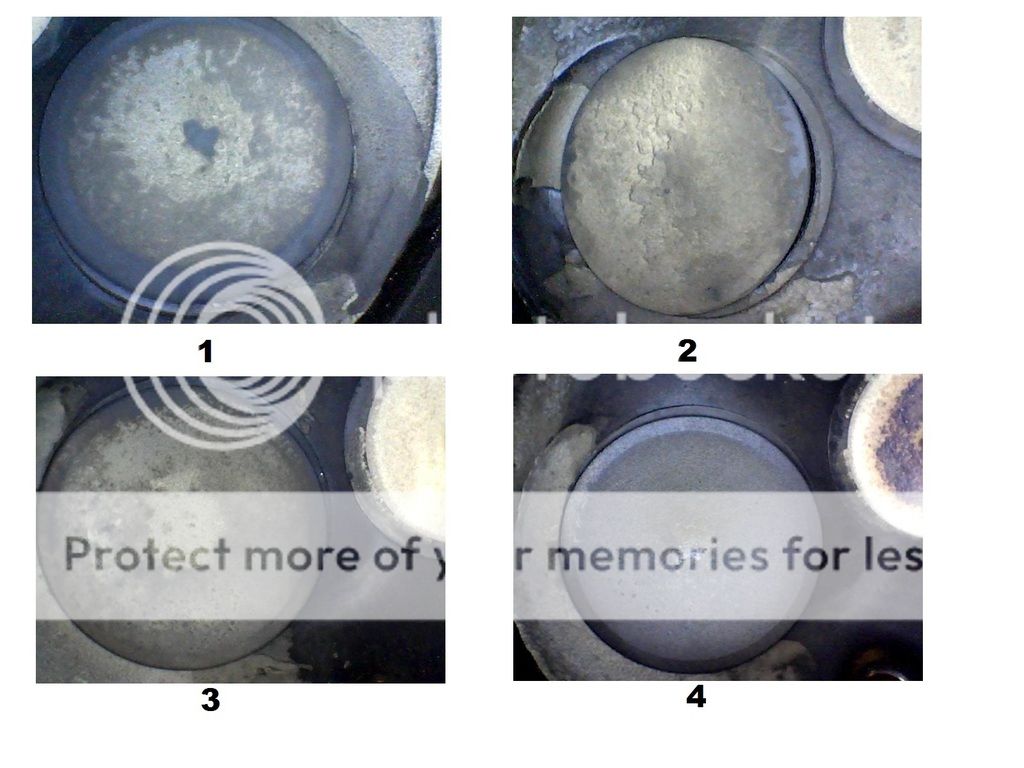jdeas
Well Known Member
Did a leak down and scope last night and had some questions given the difference in the intake valves. Cyl 1 and 3 I expected however 2 appears to have abnormal lead buildup and 4 is really cleaner than expected.
1 80/74
2 80/65
3 80/75
4 80/77
#2 was 80/73 on the first attempt so I don't put much stock in these numbers but the pictures seem to support what I am seeing in 2 and 4.
LOP testing shows the system well balanced and all plugs looked good. looking for thoughts on why #4 is so clean and #2 has a buildup and low leak down numbers.
*Chrome cylinders....

1 80/74
2 80/65
3 80/75
4 80/77
#2 was 80/73 on the first attempt so I don't put much stock in these numbers but the pictures seem to support what I am seeing in 2 and 4.
LOP testing shows the system well balanced and all plugs looked good. looking for thoughts on why #4 is so clean and #2 has a buildup and low leak down numbers.
*Chrome cylinders....

Last edited:





